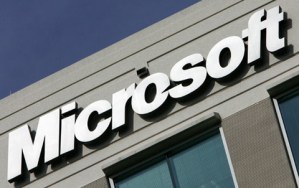
News that Microsoft CEO Steve Ballmer and staff had a quiet meeting with Adobe CEO Shantanu Narayen at Adobe’s headquarters have sparked rumors that Microsoft is mulling and acquisition of Adobe…although many industry watchers think such a deal is highly improbable. According to The New York Times, the meeting lasted roughly an hour and covered a variety of topics, including how the companies could work together to be more competitive with Apple in the mobile marketplace.
News of the meeting sent Adobe stock up more than 11 percent, based on the notion a “partnership” might include Microsoft purchasing Adobe.
Most industry watchers seem to think it far more likely that a brief meeting between CEOs was more about Ballmer rallying support for his company’s forthcoming Windows Phone 7 platform—and getting Adobe Flash up and running on Windows Phone 7 would definitely give it a competitive checkpoint against Apple’s iOS. Apple’s mobile platform doesn’t support Flash, and Apple CEO Steve Jobs has minced few words about how he feels Flash is an inappropriate technology for mobile, touch-based devices. However, Apple recently relented on permitting Flash developers to deploy applications for Apple’s iOS.
Adobe certainly has assets Microsoft might be interested in owning, including a large suite of content creation applications (the juggernaut that is Photoshop), along with Flash and Adobe’s recently-acquired Omniture Web analytics business. Microsoft’s positions in the Windows desktop application market and online advertising would certainly raise antitrust scrutiny, although Microsoft has notably failed to compete with Adobe’s Creative Suite applications. However, Microsoft is unlikely to abandon it own Silverlight technology in favor of Flash, or want to shoulder the burden of maintaining two separate rich media development platforms.
Editors' Recommendations
- How to set up Windows 11 without a Microsoft account
- How Intel and Microsoft are teaming up to take on Apple
- How to take a screenshot using a Microsoft Surface
- 7 beloved Windows apps that Microsoft has killed over the years
- Apple’s Vision Pro to get bespoke Microsoft 365 apps at launch


